Black masterbatch
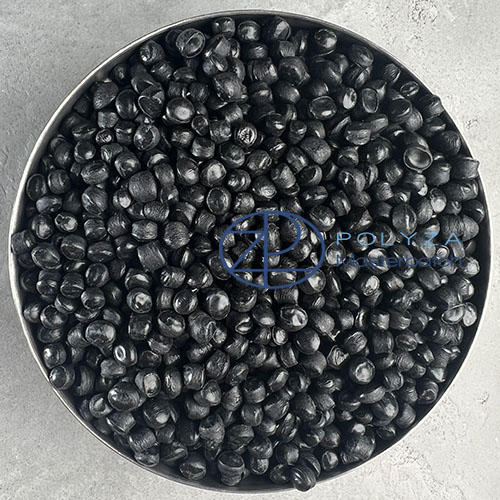
Black masterbatch based on polyethylene (HD)
40% soot

Black masterbatch based on polyethylene (HD)
35% soot / 20% carbonate

Black masterbatch based on polyethylene (LLD)
45% soot

Black masterbatch based on polypropylene (PP)
متن سربرگ خود را وارد کنید
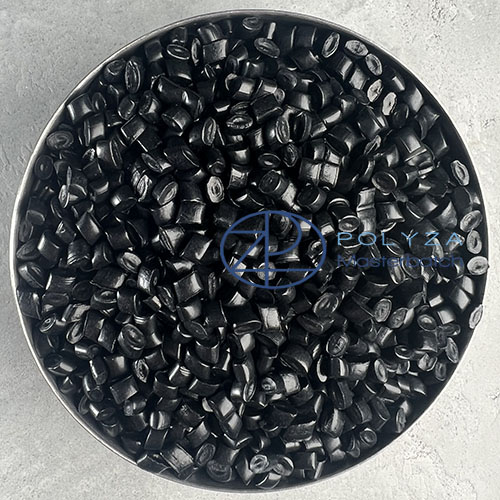
Black masterbatch based on polyethylene (LD)
35% soot
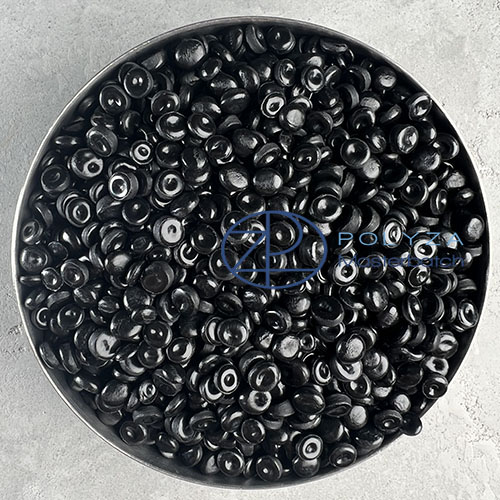
Black masterbatch (LD-LLD)
40% soot

Black masterbatch based on polyethylene (LD)
40% soot
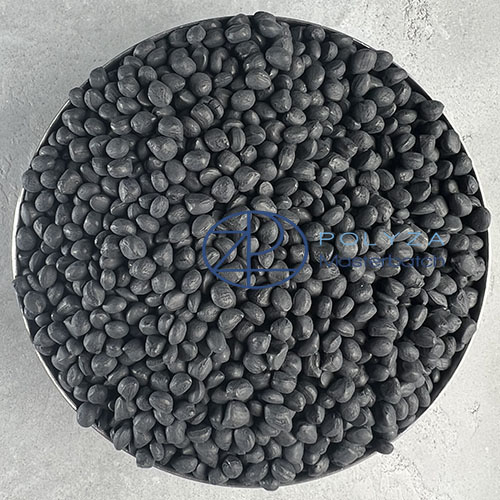
Black masterbatch based on polyethylene (LD)
30% soot, 45% carbonate
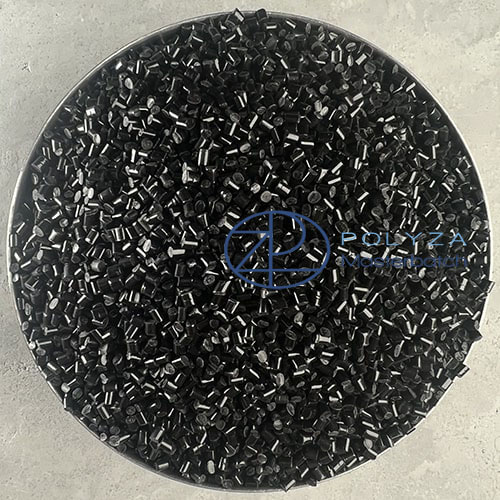
Black masterbatch based on ( ABS )

Black masterbatch for thin wrappers (PE)
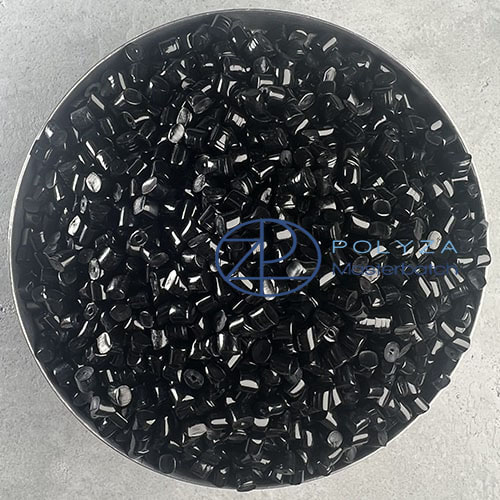
Black masterbatch based on polyamide (PA)
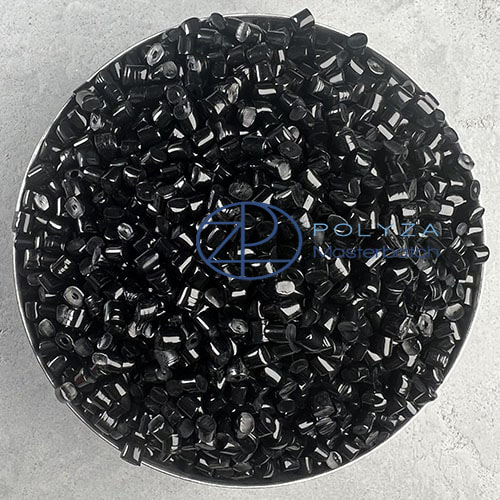
Super Nano glossy black masterbatch
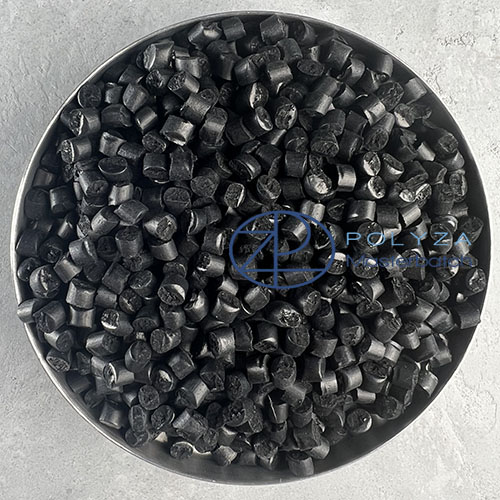
Black masterbatch 35% soot
25% carbonate

Black masterbatch
40% soot
Black masterbatch
Armen Polymer black masterbatch is produced based on different thermoplastic matrices, including (PE-PS-PET-ABS-EVA-PA-PP) with standard carbon black percentages in every industry based on polymer knowledge.
Black masterbatch is divided into two categories
- shiny
- matte
Among the most influential factors in the production of masterbatch, including black masterbatch, are factors such as
- Temperature and ampere control
- Use of soot compatibilizer with base polymer
- Using a suitable dispersant
- Using a production system with multiple feeders
In terms of appearance, high-quality black masterbatch has the following features
- Glossy surface
- Smooth surface
- The cross-sectional surface is completely smooth and without deformation of the cutting area
Advantages of Black Masterbatch
- High filter quality
- Suitable processability and high and uniform distribution in polymer chains
- Very high gloss
- No formation of accumulated particles and bubbles in the product and clouds and airiness


Black masterbatch applications
- Packaging film and wrappers
- Pipes and fittings, tapes and fittings
- Covering all types of cables
- Injection parts
- Foams and extrusion products
Ultraviolet properties of black masterbatch of Armen Polymer Company
One of the environmental factors is the destruction of ultraviolet polymers, the migrant for ultraviolet polymers is the exposure of plastics to this radiation, such as sinks that are not disposable and have a longer life, such as car parts, polyethylene irrigation pipes, etc. Such products are exposed to ultraviolet light for a long time, especially in the presence of oxygen, and with the passage of time and chemical degradation, their mechanical properties decrease and their serviceability decreases.
Chemical and mechanical resistance can be greatly increased with the presence of black masterbatch. Soot and anti-UV present in Armen polymer black masterbatch play the role of resisting and anti-ultraviolet, that is why black color is used instead of other colors in such products. And in the next levels of white, blue and green colors, the rule of thumb is that the pigments absorb ultraviolet light. and prevents it from penetrating into the plastic mass and polymer chain, in the meantime, carbon black is the best option, about 2-3 kg of masterbatch per hundred kg of product can increase the resistance to ultraviolet rays by 15 times, that is why masterbatch is used in some products Black is mandatory. Tires and tubes are typical examples of these products.
Soot Surface Chemistry in Black Masterbatch: Chemical Factors of a Good Soot
The ability to absorb ultraviolet light
Good distribution in polymer matrix such as (PE, PP, PA, PC, PS,…)
Low moisture absorption
Size of primary soot particles, structure of clusters and its composition
The size of primary particles strongly controls the performance of carbon black in creating resistance to ultraviolet light
Primary particles can be from 5nm to about 60nm, the common problem is spherical, some soots are shaped outside of the ideal sphere.

Structure of clusters
Primary particles of soot with different arrangements form cluster structures together. Their importance on the properties of soot depends on the following factors:
1) The shape of clusters
2) Size
3) The percentage of cavities and their empty spaces
The structure of the clusters affects the distribution of soot in the final product, and improper distribution causes the following factors:
1) Reduction of UV resistance performance
2) Weakening of mechanical and surface properties
Factors that cause light resistance of plastic products in black masterbatch
- SC arengers of free radicals: stops the oxidation reaction (destruction in the presence of oxygen).
- Quencher: They absorb ultraviolet energy and release it as other energy such as heat and fluorescent.
- Sunlight absorbers
- Sunlight reflectors
(Soot covers all 4 factors simultaneously.)

